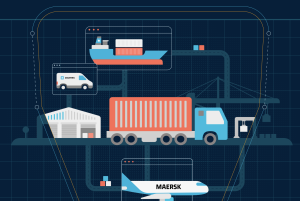The role of procurement extends far beyond the belief that procurement’s primary function is to obtain goods and services in response to internal needs. A world-class procurement process aims to optimise the whole process to create significant business value. Procurement optimisation leads to a number of benefits and adds remarkable value to your organisation as a whole. It ensures efficiency in your procurement process which in turn has a domino effect of positive reactions within your entire organisation.
Since the procurement process touches every organisational department and affects revenue directly, it is essential to keep the process running smoothly by regularly reviewing what’s working well and what needs to be optimised for greater efficiency.
Procurement Academy’s Marc Wins takes a look.
Why do you need procurement optimisation?
All businesses aim at converting incoming resources into profits by turning those resources into sellable products and services. To reach this result, those resources must be procured in the most efficient and effective way, otherwise it would lead to reduced profitability. Refining procurement in parallel with every other aspect of your organisation strategy, tactics and operations would lead to greater profitability.
An important benefit of procurement optimisation is reflected in the savings of an organisation. By managing procurement effectively, it will allow an organisation to make cost savings by procuring items, services and contracts at a better price. Moreover, through procurement optimisation, a company will be able to properly take advantage of any warranties or discounts that are often forgotten. This ultimately leads to savings. A performing procurement function will also allow for better visibility into company spending and budgets, which will allow organisations to negotiate better contracts with vendors, enabling a company to take full advantage of discounts that might have previously appeared unavailable to them.
An optimised procurement process will help to develop an organisation’s bottom line and increase efficiency. To make such improvements, it is essential to provide employees with the right procurement tools, which will enable them to improve upon the current procurement process.
How to optimise your procurement process?
Up-skill employees
One of the key factors leading to a successful business is a good training and development programme. Research by Middlesex University’s Institute for Work-Based Learning showed that from a sample of 4300 workers, 74% felt that they were not achieving their full potential at work owing to lack of development opportunities. The research showed the importance of training and development to ensure successful business continuity.
A good training and development programme will positively affect a company’s productivity and profitability as a whole. It will maintain a competitive edge, leading to higher customer satisfaction and faster growth. Nowadays, through innovative training solutions, employees are more likely to be engaged in what they are learning. For example, through eLearning solutions combined with simulations, employees can apply what they are learning in their day-to-day jobs. This leads to increased productivity and enables employees to make the best decisions for the organisation’s advancement.
Maintain good supplier relationships
Procurement professionals are increasingly recognising that developing partnerships with main suppliers can indeed deliver significant benefits to the buyer and supplier. Before this transition, businesses were somehow neglecting SRM and were focussed more on nurturing customer relationships and reducing costs. Eventually, organisations have understood the considerable benefits of good supplier relationship management. Research by PWC showed that there is a positive link between good supplier relationship management and an increase in market share, responsiveness to market changes, increased return on investment and shortened order fulfilment lead times.
Improve negotiation and analytical skills
Having good negotiators within an organisation is a significant advantage. As organisations become aware of how essential it is, many are opting for negotiation training to help their employees develop their negotiation competence and knowledge. This is likely to improve the chance of good or better deals for an organisation, leading to higher profitability. However, negotiation training must include up-skilling employees to engage in negotiations that continually pursue their key objectives, while listening to the objectives of their suppliers or clients.
Agile and consumer-driven procurement
Deploying agile procurement does not only consist of the operational side of a brand. Consumers are also a main factor to consider in procurement – their needs, wants and how they interact with your brand are essential elements. The customer must be the focal point of all key activities and functions within procurement. With this approach, services are designed based on users’ wants and needs, rather than forcing them to change their behaviour to accommodate procurement’s internal processes.
Incorporate a contract management system
With advances in technology, businesses are able to save time and be more efficient. A good way of using technology to improve the procurement process is by incorporating a contract management system. Organisations usually work with hundreds of suppliers every year and creating contracts is time consuming. Using a contract management system, the task of creating new contracts is made easier when on-boarding a new supplier. Using such a system enables you to create standard contract templates that require only minor updates when they are re-used. In so doing, you understand which contract can be reused from one supplier to the next.
What does this mean?
An optimised procurement process will positively affect an organisation’s bottom line and increase efficiency and profitability, which will ultimately add significant value to your organisation as a whole. To make the most of procurement optimisation, the right strategies must be implemented and employees should be well-trained.
Originally published by The Procurement Adacemy


























